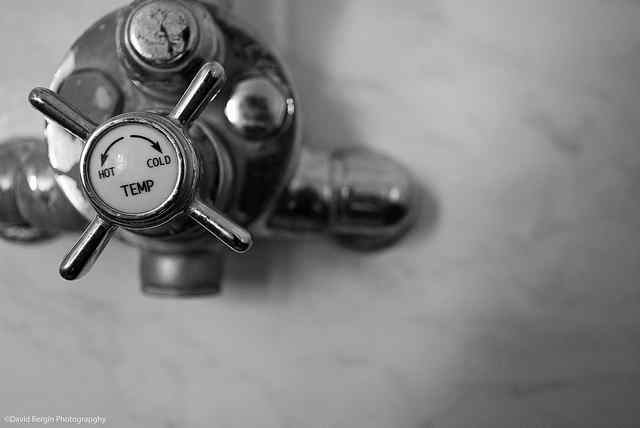
David Bergin: https://www.flickr.com/photos/friend0o/
Hot showers. Steamy dishwashers. Warm loads of laundry.
On a daily basis, we rely on heated water so frequently that we often dont even think twice about it.
That is, until its gone.
The list of warning signs for water heaters is infinite. They can produce rust-colored water. Or maybe they leak. Or smell like old eggs. Or hiss. Or pop like popcorn. With the average life expectancy of a water heater being 8-12 years, youve likely acquired your own laundry list of water heater maladies.
The good news, however, is that you may be able to fix your water heater with a little know-how and tinkering.
Why the Cold Shoulder?
Why do water heaters stop working? If you have a gas heater, common causes are faulty gas pilots, broken thermocouples, and damaged gas pilot control valves.
If your gas heater isnt producing any hot water at all, the first place to check is the pilot flame. Malfunctioning pilot flames are the number one reason why gas heaters fail. To fix them, first make sure the thermostat is in the heat mode, and turn it to a high temperature, like 80 degrees. Then turn the gas knob to the Off position and wait about 3 minutes. Light the pilot by turning the knob from Off to Pilot and use a fireplace or grill lighter to hold a flame to the pilot while depressing the knob. Once the pilot is lit, slowly turn the gas knob to the On position. If the burners did not ignite, wait a few minutes and repeat the above steps, this time depressing the knob for 60 seconds. After the main furnace ignites, adjust the thermostat to the desired temperature
If, after trying these steps, that stubborn flame still wont ignite, or doesnt stay ignited, your solution may lie in replacing the thermocouple or flame sensor. Thermocouples are used in standing pilot furnaces, while flame sensors are used in electronic ignition furnaces. To replace a thermocouple, youll likely be fine buying a universal replacement. Flame sensors, however, need to fit your furnaces make and model, so check to make sure you get the right kind of new one.
On the other hand, if you have an electric water heater with problems, the list of potential causes is varied and can include a faulty heating element, a broken thermostat, or a blown circuit breaker or fuse. Repairing an electric water heater can involve significantly more work and risk than repairing a gas water heater, including checking wiring with a large amount of current. When working on an electric water heater, make sure to carefully follow safety precautions.
The place to start when repairing an electric water heater is the electrical panel. Make sure the circuit breaker is on and that all fuses are installed securely. If all looks normal, the problem may involve the controls or heating element. If you dont have experience working with electric water heaters or electrical wirings, we recommend contacting a professional at this point.
When Theres Nowhere to Go but New
Once you or a professional has tried all the repairs in the book and your water heater is still giving you the cold shoulder, its time for a replacement.
Storage tank water heaters are the most common type, and have tanks that heat up water in advance so there is always a hot water supply. They are available in varying sizes depending on your needs, and can be electric, LP, and gas.
Depending on your demands, you may prefer a tankless water heater. Rather than having a tank, tankless heaters heat water as it passes through the unit. Tankless water heaters produce a smaller volume than a storage tank water heater, but tend to be more economical. These types of units are also available in electric, LP, and gas.
Find Your Solution
Whether you choose to repair your old one or install a new one, with a little attention and care youll have a water heater that works so well you wont think twice about it.










